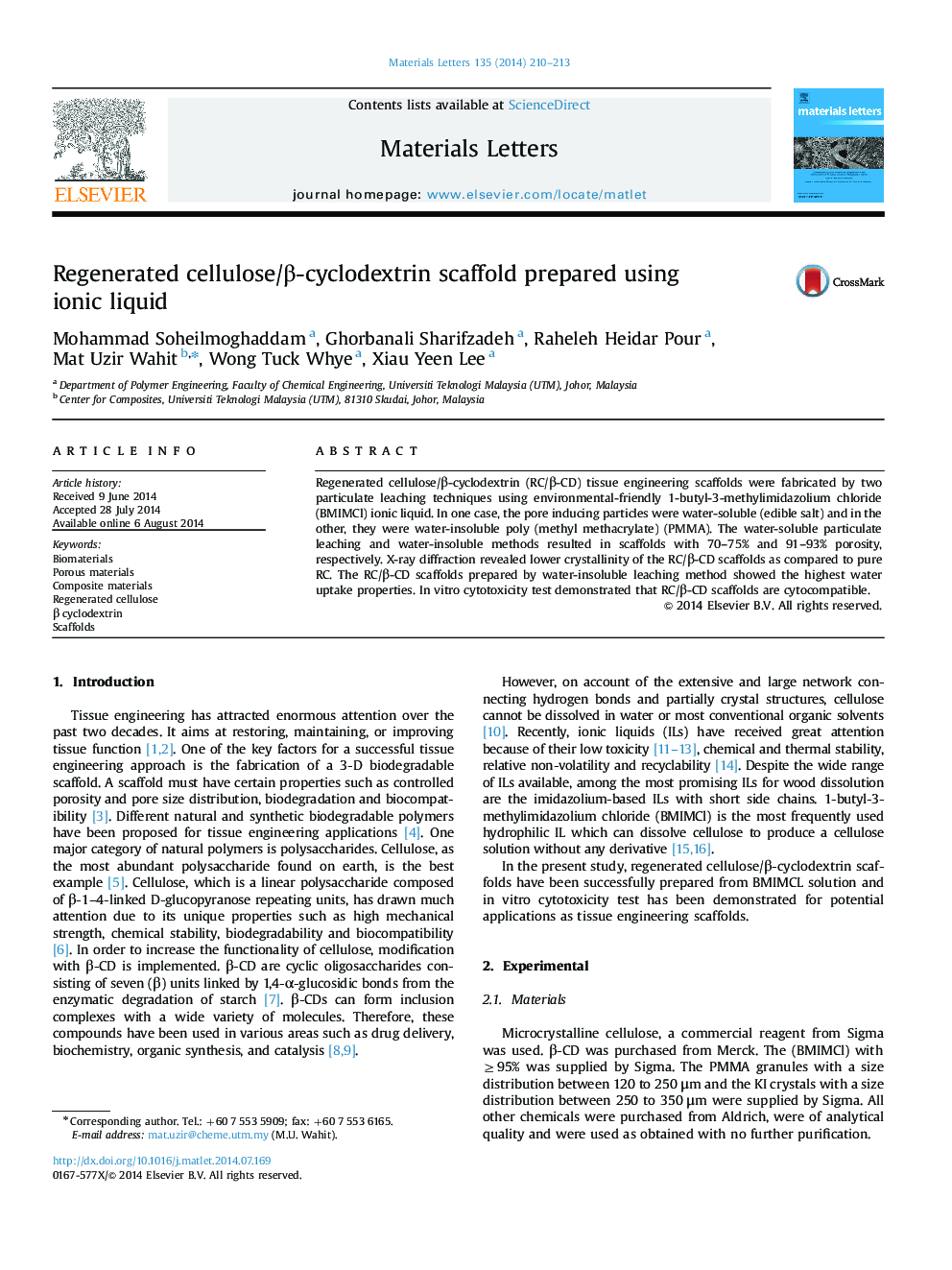| Article ID | Journal | Published Year | Pages | File Type |
|---|---|---|---|---|
| 1643406 | Materials Letters | 2014 | 4 Pages |
•RC/ β-CD tissue engineering scaffolds were prepared via ionic liquid.•XRD shows the lower crystallinity of the scaffolds as compared to the pure RC.•Scaffold exhibited interconnection and surface porosity.•In vitro cytotoxicity test demonstrated that RC/β-CD scaffolds are cytocompatible.
Regenerated cellulose/β-cyclodextrin (RC/β-CD) tissue engineering scaffolds were fabricated by two particulate leaching techniques using environmental-friendly 1-butyl-3-methylimidazolium chloride (BMIMCl) ionic liquid. In one case, the pore inducing particles were water-soluble (edible salt) and in the other, they were water-insoluble poly (methyl methacrylate) (PMMA). The water-soluble particulate leaching and water-insoluble methods resulted in scaffolds with 70–75% and 91–93% porosity, respectively. X-ray diffraction revealed lower crystallinity of the RC/β-CD scaffolds as compared to pure RC. The RC/β-CD scaffolds prepared by water-insoluble leaching method showed the highest water uptake properties. In vitro cytotoxicity test demonstrated that RC/β-CD scaffolds are cytocompatible.
Graphical abstractFigure optionsDownload full-size imageDownload as PowerPoint slide
